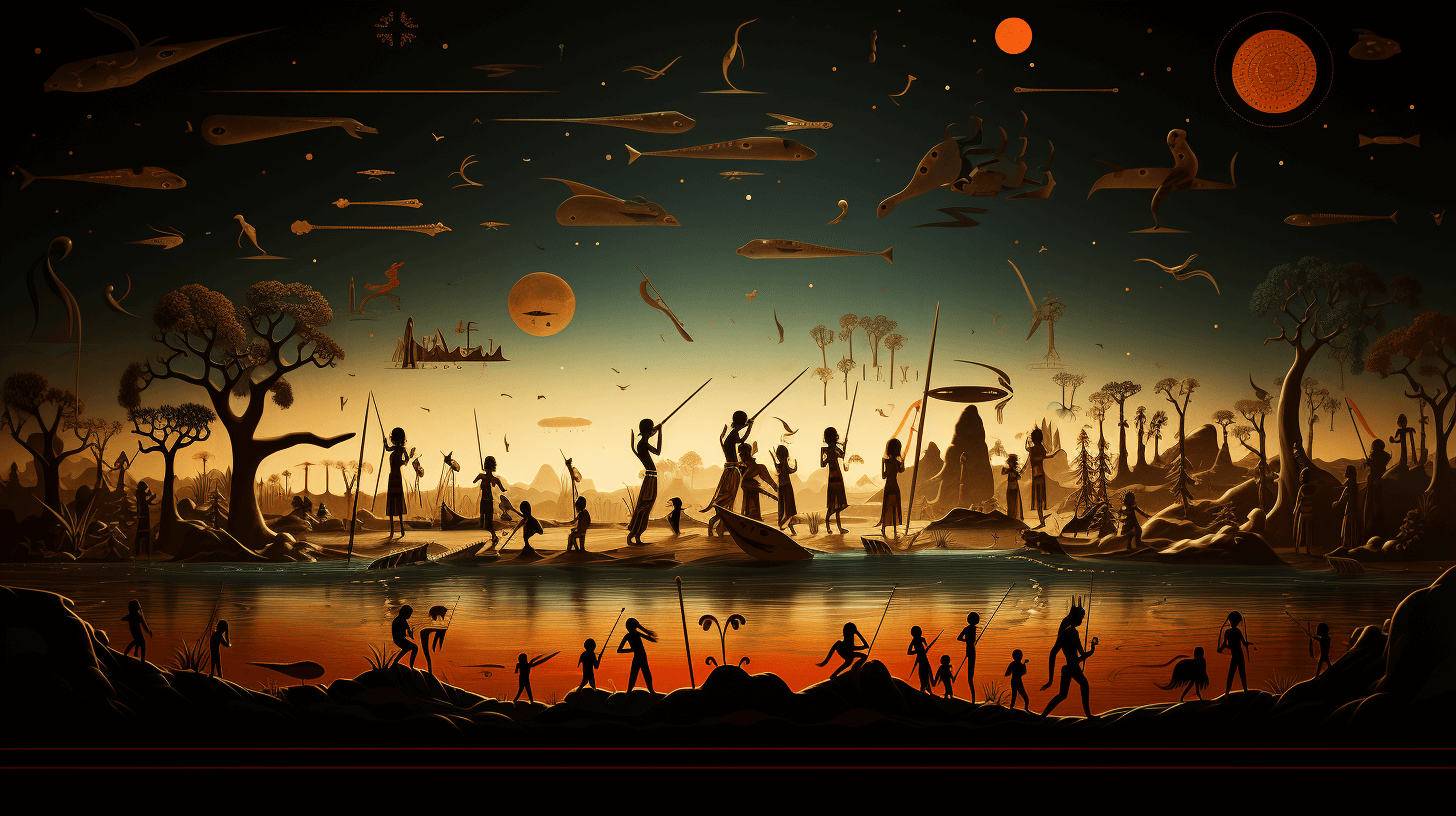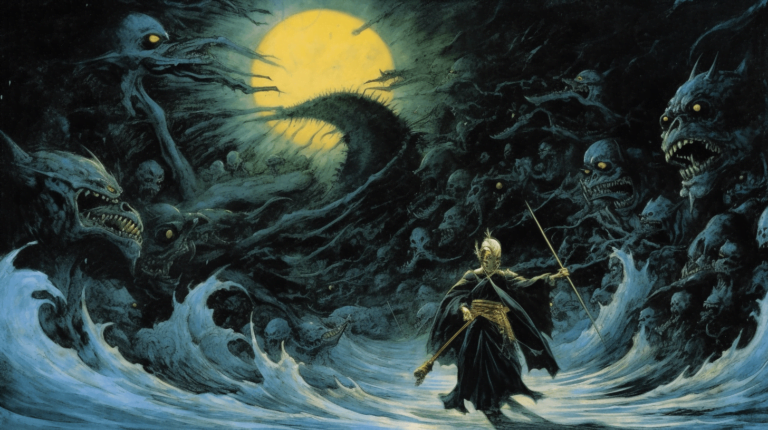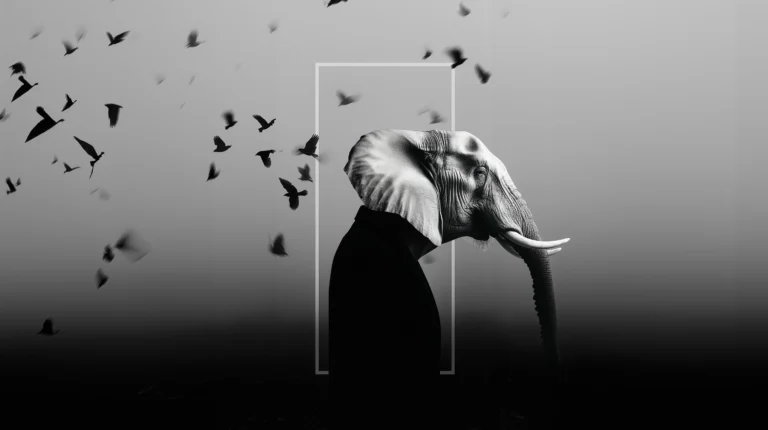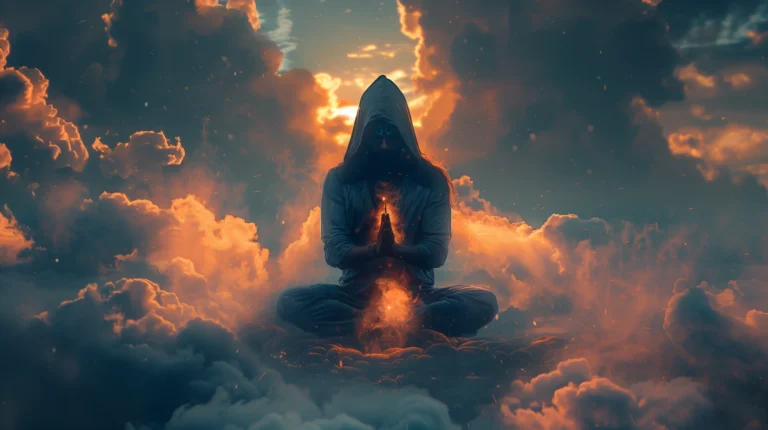The Meaning and Importance of Mythology
Introduction
The evocative stories that echo through time, painting vivid narratives of gods, goddesses, heroes, and monstrous creatures, are more than mere tales of imagination; they are integral strands in the vibrant tapestry of human culture and society. These are myths, a form of ancient storytelling that encapsulates the ethos, values, and belief systems of civilizations. Beyond the realm of entertainment, mythology has shaped and continues to impact numerous facets of human life. Understanding mythology, therefore, provides a key to unlocking the secrets of past societies and our own cultural psyche.
What is Mythology?
Mythology, derived from the Greek word ‘mythos’ meaning story or word, is a collection of traditional narratives that express a culture’s worldview and its most profound beliefs and values. Myths are typically passed down from generation to generation, and they often involve powerful deities, supernatural beings, legendary heroes, and ancestral figures. They explore timeless themes such as the creation of the universe, the human condition, morality, life, death, and the afterlife.
The Influence of Mythology Today
Mythology continues to exert a profound influence in modern times, shaping literature, art, movies, and even video games. It offers a rich repository of symbolic and narrative resources that creators draw upon to imbue their works with depth and meaning. Mythological narratives and archetypes have found their way into modern psychology, providing tools to understand and navigate the human psyche.
Mythology is a reflection of the human desire to understand the world, a framework for societal order, and a mirror for individual and collective self-perception. It anchors us to our past, enriches our present, and bequeaths us with narratives and symbols.
Defining Myths and Their Common Features
A close encounter with a fire-breathing dragon, a quest for a golden fleece, a journey through the underworld; these scenarios may seem as fantastical as they come, but to the ancient people who conceived them, they were deeply symbolic and meaningful. These are the myths that have seeped through the cracks of time, stories that form the backbone of human civilization and culture. This section aims to explore the definition of myths and delve into the common features that these vibrant narratives share.
What is a Myth?
At its core, a myth is a traditional narrative, often of unknown origin and passed down through generations, that is deeply embedded in a particular culture or society. Myths seek to explain the world and human existence through the extraordinary, typically involving gods, supernatural beings, heroes, and ancestral figures. Rooted in the sacred and spiritual, myths address existential questions, morality, and the complex interplay of good and evil.
Common Features of Myths
While myths vary greatly in content and style across different cultures, they share a number of fundamental characteristics:
1. Supernatural Elements:
Myths often involve gods, deities, supernatural entities, and otherworldly realms. These elements add a sense of wonder and magnify the scale of the narratives, allowing them to encompass grand themes and ideas.
2. Heroic Figures:
Central to many myths are heroes or protagonist figures who undertake significant journeys or quests. These figures often possess extraordinary abilities or divine lineage, and they navigate trials and tribulations, showcasing their virtues and teaching valuable life lessons.
3. Explanation of Natural Phenomena:
Before the advent of modern science, people relied on myths to explain the mysteries of the natural world, from the rising and setting of the sun to the changing of the seasons. These phenomena were often attributed to the actions or whims of gods and supernatural beings.
4. Symbolism and Metaphor:
Myths are rich with symbolic language and metaphor, allowing them to convey profound, complex ideas in a way that’s engaging and accessible. Symbols in myths are often universal, cutting across different cultures. For instance, water is frequently symbolic of life, rebirth, or purification.
5. Creation Stories:
Many myths involve narratives about the origins of the world, humanity, and civilizations. These creation myths provide a cultural explanation for existence and give members of that culture a sense of shared history and purpose.
6. Rituals and Ceremonies:
Many myths have a strong connection with rituals and ceremonies. They often provide the origin or the justification for certain cultural practices, rituals, and traditions.
7. Moral Lessons:
Myths frequently serve to illustrate moral or ethical principles, teaching listeners about the rewards of virtuous behavior and the penalties for misconduct. They often promote societal norms and values.
8. Cultural Reflection:
Myths serve as a mirror to the cultures from which they originate. They reflect the customs, traditions, fears, hopes, and values of a society, providing invaluable insight into the human condition.
While myths are born from the fertile soil of imagination, they are far from arbitrary. They are carefully woven narratives that bear the weight of human understanding and exploration of the world. The definition and common features of myths offer us a lens to better understand these ancient narratives. Through their timeless tales, we not only engage with the past but also gain a deeper understanding of the universal aspects of human experience.
Exploring the Purpose and Functions of Myths in Societies
Mythology is not just the realm of gods, monsters, and heroes. It’s an intrinsic part of human history and culture. Myths, these sacred narratives from antiquity, carry an array of functions and purposes that underpin our understanding of societies both past and present. To decipher the true value of myths, we must unravel the roles they play within their societal contexts.
The Multifaceted Functions of Myths
1. Explaining the Unexplainable:
Before the advent of modern science, myths served as mankind’s earliest attempts to interpret the mysteries of the natural world and life itself. Volcanic eruptions, thunderstorms, the cycle of seasons, even the enigma of human existence — all were attributed to the will and whims of divine entities or supernatural phenomena. Thus, myths provided early societies a comforting sense of comprehension and control over their environments.
2. Establishing Moral Codes:
Myths are didactic tools, often woven with potent moral lessons. Heroes demonstrate virtues like courage, integrity, and wisdom, while villains embody vices such as greed, deception, and malice. Through these narratives, societies could instill moral and ethical standards, influencing behaviour and promoting social harmony.
3. Providing Cultural Identity:
Myths are integral to the cultural fabric of societies, delineating the values, norms, and traditions that define a group’s identity. Often, myths recount the origin of a tribe or nation, the founding of cities, or the establishment of customs, binding individuals together with a shared history and heritage.
4. Guiding Rituals and Religious Practices:
Many myths form the bedrock of religious beliefs and spiritual customs. They narrate the lives and deeds of gods, laying out the customs for worship, outlining rituals, and detailing festivals. Through myths, societies can derive spiritual meaning and find a deeper connection with the divine.
5. Educating and Entertaining:
Myths serve as captivating stories passed down generations, preserving wisdom, heritage, and history. They educate the young about their ancestors, cultural values, and societal norms. Simultaneously, with their vibrant cast of characters and dramatic plots, myths captivate the imagination, providing entertainment for all.
6. Offering Comfort and Hope:
Myths often grapple with profound existential questions such as the purpose of life, the inevitability of death, and the promise of an afterlife. In providing explanations for these complex concepts, myths offer comfort, solace, and hope to individuals facing life’s challenges.
7. Enabling Psychological Exploration:
Carl Jung, the renowned Swiss psychiatrist, proposed that myths allow us to tap into the “collective unconscious,” a reservoir of shared human experiences and archetypes. Through the lens of mythology, we can gain insight into human psychology, exploring themes like personal transformation, conflict resolution, and the human instinct for survival.
The longevity and universal appeal of myths underscore their profound relevance in human societies. They are not just stories; they are vehicles of wisdom, pillars of morality, compasses of culture, and windows into the human psyche. By examining the purpose and function of myths, we can better appreciate their value as enduring narratives that transcend time, space, and civilization. These sacred stories, replete with gods and heroes, monsters and miracles, continue to reverberate through the ages, offering timeless insights into the complexities of the human condition and the societies we build.
Mythology and Religion
Mythology and religion are two realms often linked so closely that their borders appear indistinguishable. These entities, while distinct in certain aspects, share a symbiotic relationship, mutually shaping and influencing one another across cultures and civilizations. This section aims to explore the intricate relationship between mythology and religion, elucidating their overlapping areas, unique features, and shared roles in human societies.
Defining Mythology and Religion
Mythology, from the Greek ‘mythos’ (story or word) and ‘logia’ (study), is a collection of traditional narratives deeply embedded in a culture or society. These narratives typically involve deities, supernatural beings, and heroes, addressing existential questions, morality, and the interplay of good and evil.
Religion, on the other hand, is an organized system of beliefs, practices, and values centered around the worship of one or more deities. Religion often provides a moral framework, explains life and death, and seeks to provide a sense of purpose to human existence.
The Relationship Between Mythology and Religion
Myths are an integral part of many religious traditions. They serve to narrate the origin of the universe, the actions of deities, the establishment of societal norms, and the reasons behind various rituals and practices. From the tales of the Hindu gods in the Vedas to the narratives about the life of Jesus in the Bible, myths imbue religions with richness and depth.
1. Shared Characters and Narratives:
Both mythology and religion often revolve around gods, goddesses, supernatural beings, and heroic figures. For instance, Zeus in Greek mythology is similar to Jupiter in Roman religion; both are supreme gods wielding the power of thunder and lightning.
2. Mythology as Religious Text:
Many myths form the core narratives in religious texts. For example, the mythological stories found in the Vedas, the Bible, or the Quran provide followers with a roadmap for their spiritual journey, laying out the tenets of their faith.
3. Ritual and Worship:
Mythology often provides the basis for rituals, ceremonies, and forms of worship in various religions. The myths explain the reason for the rituals, the offerings to be made, and the manner of their performance.
4. Ethical and Moral Framework:
Both mythology and religion often present ethical and moral lessons. Through myths, religions explain the virtues to aspire to and the vices to avoid, often through the actions and experiences of mythical characters.
5. Theological Explanation:
Myths offer an explanation for the theological constructs within a religion. They detail the characteristics, powers, relations, and interactions among various deities.
6. Eschatology:
Myths are often used to explain complex concepts such as life after death, the end of the world, and the afterlife, which are central themes in many religions.
The interplay between mythology and religion offers a fascinating study into the human quest for understanding and meaning. While religion provides a structured approach to the spiritual aspect of human life, mythology serves as the narrative tool that fleshes out the beliefs and principles inherent in religious practices. By delving into the shared realms of mythology and religion, we gain a richer perspective on the spiritual and cultural heritage of human civilizations and their enduring search for existential meaning.
Joseph Campbell on Mythology: A Guide for Life’s Journey
Joseph Campbell, a renowned scholar and mythologist, spent his career exploring the power of myth in human life. According to Campbell, myths are not merely tales of gods and monsters, but profound narratives that reveal universal truths about the human experience. This section delves into Campbell’s understanding of myth and its role in guiding a person’s life journey from infancy to adulthood.
Joseph Campbell’s Definition of Myth
Joseph Campbell saw myths as timeless, transcultural metaphors that help us understand the universe and our place within it. He believed that all myths, regardless of their cultural origin, contain shared patterns and themes – the result of common psychological, social, and existential realities faced by humanity across time and place.
According to Campbell, myths “are clues to the spiritual potentialities of the human life.” In other words, myths serve as guides, providing timeless wisdom and insight into life’s most profound questions. They help us navigate complex life stages and transitions, offering archetypal narratives and characters to illuminate our path.
Myth and the Hero’s Journey
Perhaps the most influential aspect of Campbell’s work is his concept of the “Hero’s Journey” or the “monomyth.” This model outlines a common pattern found in many narratives worldwide, where a hero embarks on an adventure, faces and overcomes trials, and then returns home transformed.
The Hero’s Journey, according to Campbell, serves as a metaphor for personal growth and transformation. It is the journey we all undertake in varying degrees throughout our lives, from infancy to adulthood and beyond.
Infancy and Childhood
In infancy and early childhood, the “call to adventure” may be understood as the process of individuation – the child’s initial steps towards distinguishing themselves from their parents and the world around them. This stage in the Hero’s Journey involves crossing a threshold from the familiar world into an unfamiliar one, such as starting school or making new friends.
Myths offer symbolic language and stories to help children make sense of these changes. They provide an understanding that trials and tribulations are a natural part of life, offering assurance that heroes, like themselves, can overcome obstacles.
Adolescence
As individuals move into adolescence, they confront new challenges – the awakening of sexuality, the struggle for independence, the quest for identity. Campbell’s stage of “trials and tribulations” resonates with the adolescent experience.
Again, myths can be invaluable guides during this turbulent time, providing narratives where characters undergo similar struggles. They offer frameworks for understanding these experiences not as isolated or peculiar, but as universal stages in the human journey.
Adulthood
Adulthood, in Campbell’s framework, is where the hero faces their greatest challenge, often involving death or confrontation with a formidable enemy. This stage parallels the trials and tribulations adults face—whether it’s establishing a career, building a family, or confronting mortality.
Through myths, adults can understand their struggles within a broader context. They can see their personal transformations as part of a larger, heroic journey, helping them to view challenges as opportunities for growth rather than merely hardships.
Conclusion
In the worldview of Joseph Campbell, myths are far more than ancient tales—they are dynamic blueprints that shape and reflect the human journey. They provide us with symbolic tools to navigate life’s transitions, guiding us from infancy through adulthood and into the twilight years. Campbell’s work reminds us that, though the specifics of our trials may differ, we each partake in the universal quest of the human experience. In this light, we are all heroes on our own personal journeys, guided by the timeless wisdom of myth.
In a world spun from timeless tales and lore,
Where human hearts seek and explore,
From Joseph Campbell’s wisdom springs,
A lesson in the form of mythical wings.
Beyond the veil of gods and beast,
In myths, the human soul is leased,
In every fable, yarn, and story,
Lies a mirror of our glory.
Metaphors transcending time,
In every culture, every clime,
Myths serve as guides on life’s vast sea,
Signposts of our destiny.
Campbell’s Hero’s Journey, grand,
A monomyth across each land,
A common thread in tales of yore,
From dawn of time, forever more.
Infants heed the call to stray,
From mother’s arms, they make their way.
Crossing thresholds in their youth,
In search of universal truth.
Through trials and quests, adolescents fight,
Awakening in the chill of night,
In myths they find their fears, assuaged,
Guided through this crucial stage.
In adulthood’s daunting shadowed vale,
Against life’s gales, we set our sail,
Myths remind us, in our strife,
Each challenge faced, enhances life.
Myths, they map the human heart,
In every end, in every start,
They shape our lives, in joy and sorrow,
Guiding today, shaping tomorrow.
Through Campbell’s lens, the truth unwinds,
Myths are mirrors of our minds,
We are heroes, in tales we trust,
Wrought from stardust, bound for stardust.







